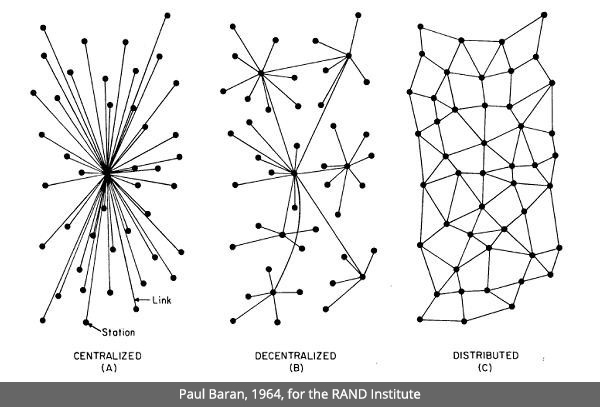April 9, 2020
COVID-19 Will Accelerate the Decade of Supply Chain
In this article:
- What we can learn from the supply chains that adapted more easily to COVID-19 disruptions
- No matter the product or service, digitization is the key to developing a more adaptable supply chain
- A roundup of other key solutions being recommended by supply chain thought leaders
Back in January, we predicted that the 2020s would become the Decade of Supply Chain, but we weren’t expecting anything like the current situation.
Since early February 2020, almost 75% of US businesses have experienced some sort of disruption to supply chain due to COVID-19. Supply chain thought leaders like Dan Stanton have done guest spots on Fox News and CBS, and the term ‘supply chain’ has become a household word. Businesses and individuals are struggling to understand what’s going on and to adjust.
While we must not forget that the recent outbreak of COVID-19 is first and foremost a human tragedy, as supply chain professionals we also need to focus on what we can do to adapt to disruptions like this, now and for the future.
Because in the light of SARS and MERS, we can be sure that there will be a next time.

Digitalization is No Longer Optional for Supply Chains
Digitialzation will be a big part of the new normal for supply chain.
Even before the coronavirus crisis, digitalization was a goal for many companies, but it’s a goal most have had trouble achieving. It’s a ‘public secret’ that some of the world’s largest companies are still managing supply chains in spreadsheets, siloed systems, and even paper records. There are a variety of reasons for the slow pace of adoption, but it often boils down to a combination of obtaining buy-in, the need to manage risk, and complexity.
In the post-COVID-19 era, digitalization will no longer be a long-term goal, it will become a requirement. The advantages of digitized asset records are many, but include:
- They create a single source of truth.
- Real time updates and faster communication of both demand and supply level changes.
- Easier transformation to new configurations once information is digitized once.
- Enabling future use of other technologies like IoT and machine learning/AI.
These are the advantages businesses can no longer afford to be without.
Why We Need Global Supply Chain Visibility
The current situation has also exposed the need for a fully integrated digital global supply chain. (We’re not alone in this assessment: some businesses in the US are calling for the creation of a federal supply chain office to ensure essential goods are kept in supply.)
The recent shortages of ventilators and personal protective equipment like masks have shown that the old solutions to disruption don’t always work. This is because the COVID-19 pandemic has caused disruption to both demand and supply sides of the equation simultaneously, which is unusual.
For example, when one area is devastated by a hurricane, demand for medical and humanitarian supplies goes up in that region. Other areas, where extra supplies are stockpiled, can lend a hand by sharing what they have. The COVID-19 situation is different in that demand for medical supplies has spiked everywhere simultaneously, with everyone facing shortages.
As a result, other industries are doing their best to pivot and provide or even create the medical supplies that are needed. In some situations, this can be successful, as with the 3D printing of face shields to protect front line medical workers. (3D printing may be more expensive than other manufacturing methods like injection moulding, but the extra expense is waived in light of the crisis.)
There has been less success in providing additional ventilators so far (although we hope that changes soon).
This is because changes to complex equipment manufacturing processes involve a lot of practical roadblocks, including costs, time, the need to meet regulatory standards (usually in place for good reason) and the limitations of material science. Unfortunately, it takes time and money to convert, say, an automotive plant into a ventilator assembly line.
Even as well-meaning firms heroically try to design ventilators that are easier to manufacture, they face (at minimum) weeks of prototyping, testing and approvals before the new models are put into production.
The same problems exist in other industries as they try to respond to disruptions of all kinds. There is always a delay in the response curve from demand to supply.
A global asset base would have been a game changer during COVID-19. If all medical supplies everywhere were already documented in one central location, pandemic management and response teams would instantly know what was available and where. They could have gotten those supplies onto the trucks the instant they knew what they were facing, and could have put out the call for new solutions right away.
Learning from the Adaptability of Digital
One positive revelation from the recent uptick in online service delivery is the impressive resiliency of our global internet infrastructure. With millions more people working and learning from home, internet service providers (ISPs) have been reporting incredible spikes in traffic of up to 60% in some cases.
Part of the ease of adaptation has come from entertainment firms like Netflix voluntarily throttling streaming quality to make room for more essential tools like video conferencing. The rest of it, however, comes from the fact that the internet was designed to scale and to easily adapt should one part of the network fail. The internet is not a centralized network, or even a decentralized one: it is a fully distributed network, in which any individual node is expendable:

While a home user’s connection to the web may follow a more decentralized pattern (we purchase internet access from an ISP) the structure of the web itself is completely fluid. Information can take multiple routes to get from A to B, from one set of fiber optic cables to another. Large sites and apps have their own servers (often rented space from cloud server services, who are always ready to scale up because they charge for usage). Remember, these are the people who handle the internet traffic demands of Black Friday— even if there are occasional hiccups.
If the distributed structure looks familiar, you may be one of the vanguard who have stopped thinking about supply chain and started thinking about the value network.
More Great Solutions
Rarely do we see one simple solution to complex problems like supply chain disruption. Here’s a roundup of other solutions we feel will also help supply chains become more adaptable.
1. Supply Chain Mapping
In order to adapt to an event, you must understand if the event will affect you, and how. For any kind of physical product, this means knowing where every single part used in your products come from.
MIT’s Yossi Sheffi has talked recently about the need to do effective supply chain mapping. This creates a complete record of all materials, processes, and transportation routes involved in getting your goods or services to market.
The challenging part is that you need to know who supplies the suppliers to your suppliers…as far down as the rabbit hole goes, all the way to the raw materials. This can be time consuming and expensive, especially for OEMs. As this article in Harvard Business Review says, “Executives of a Japanese semiconductor manufacturer told us that it took a team of 100 people more than a year to map the company’s supply networks deep into the sub-tiers following the earthquake and tsunami in 2011.”
Sheffi makes it clear how precise these maps need to be when he makes the distinction between knowing the location of the head office of a supplier and knowing the location of the physical plant or plants that make your nuts and bolts.
But once you know the location of all suppliers, you’re able to react more quickly to unplanned events.
2. Plan for all possible future disruptions
While not every business is big enough to support a dedicated full-time crisis management centre, it’s important to have a viable plan for all contingencies, whether they are related to production or logistics. Test them several times a year and update accordingly.
Many leading supply chain thinkers are recommending supplier diversification. This makes sense: if one goes out of business, the other can potentially step in to provide greater volumes.
3. Where possible, digitize the product
For some organizations, digital service delivery may be an option. A few months ago many of us wouldn’t have considered online delivery for therapeutic counseling, but use of these services has increased.
Other businesses have already removed the necessity of a physical product entirely, the way streaming services like Netflix have removed the need for Blu-Ray discs.
Learning from the COVID-19 Surprise
By the time that Chinese New Year was over this year, some businesses that rely on Chinese products were already running out of supplies stockpiled to deal with the holiday. But others, like research firm IHS Markit, were already making the correct calls on the pandemic’s impact on supply chain in late January.
This kind of advance warning is one of the main advantages that comes with a digitalized supply chain.
With Requis, digitalization can happen at a pace that makes sense for your organization. Start with selling surplus assets while you plan the move to our time-saving procurement module. Along the way, digitize asset records as time permits. We even have a concierge team that can help it all go faster.
At any time, check out the Requis ecosystem of suppliers and recovery buyers— you’ll find a global network of diverse companies waiting to compete for your business.
